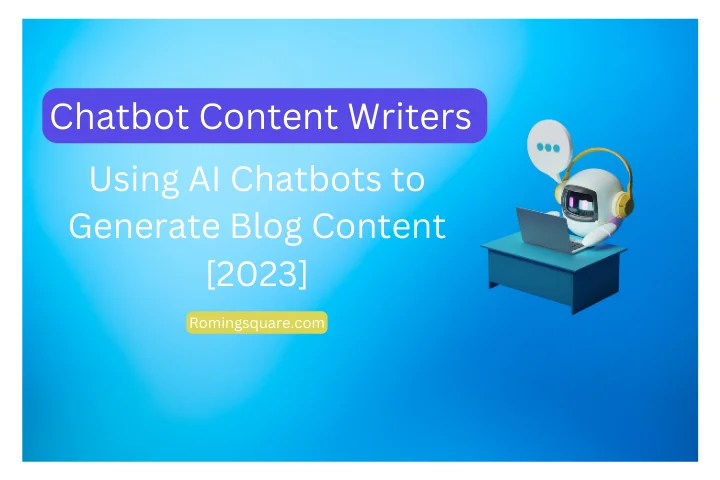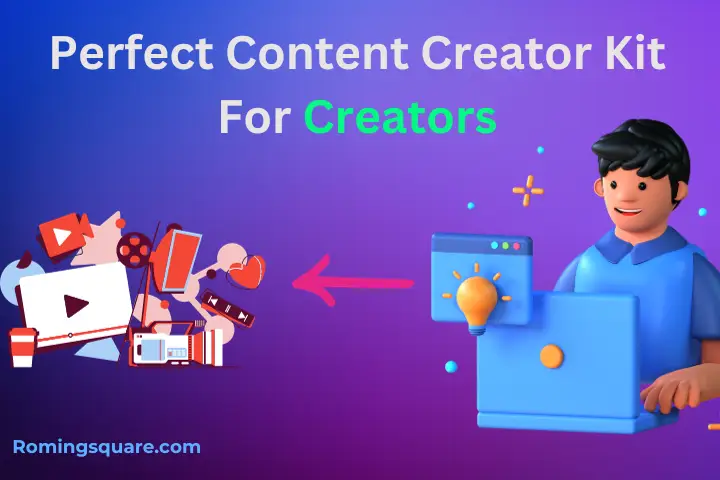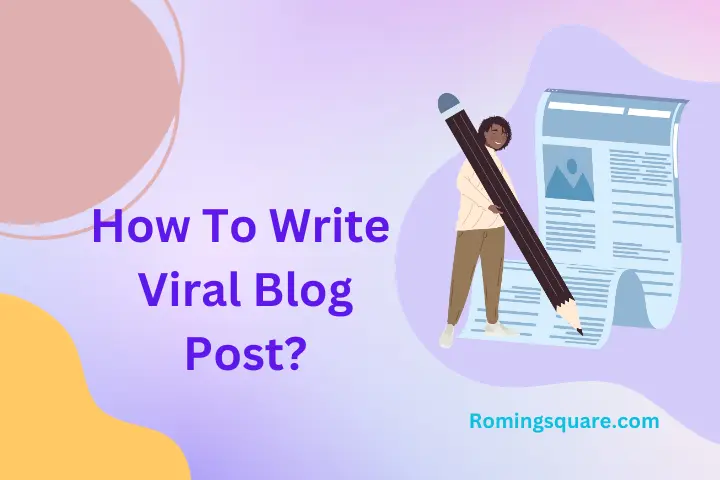
In an era where quality content is king, businesses constantly seek innovative ways to efficiently produce engaging material for their audience. Enter AI chatbot content writers – potentially revolutionary tools that automate content creation.
This article explores whether these AI authors live up to the hype.
We’ll cover:
- What are chatbot content writers and how do they work?
- Key benefits driving adoption
- Limitations to consider
- Effective strategies for leveraging their power
- How to Turn On Developer Mode in Chatbot
Buckle up for a tour of these uncannily human AI writers
💡 How AI Chatbot Writers Work Their Magic
Chatbot content writers are AI systems designed to generate written content like blog posts by mimicking human-like conversation. They produce everything from articles to product descriptions using advanced natural language processing and generation.
But how exactly do they work their magic?
🔹Analyzing Input with Natural Language Processing
These chatbots rely on natural language processing (NLP) to analyze user input and queries. NLP techniques enable understanding of sentence structure, grammar, and context so the chatbot can generate relevant, coherent content.
Some key NLP capabilities that empower chatbots include:
- Sentiment analysis – Understanding the emotion and sentiment behind input text
- Entity recognition – Identifying people, places, organizations, etc. in content
- Topic modeling – Detecting main themes and topics in documents
- Text generation – Producing new written content from scratch
By leveraging these and other advanced NLP techniques, chatbots can comprehend complex input and generate high-quality written content.
🔹Constantly Learning from Diverse Training Data
To improve the nuance, accuracy, and human-like quality of generated text, chatbot writers are trained on massive diverse datasets of high-quality sample content. These training corpora contain countless examples of well-written articles, stories, reports, and other text sources.
By analyzing these huge training datasets, the AI learns contextual relationships and patterns in natural language. This allows it to produce increasingly sophisticated, nuanced, and human-like output. The more high-quality training data it ingests, the better it becomes at text generation.
Ongoing enrichment of the training data with relevant, well-written content is crucial for chatbots to keep improving their writing abilities over time.
🔹Integrating with Content Management Systems
Many advanced chatbot content writers integrate directly with existing content management systems (CMS) like WordPress and HubSpot.
This seamless integration enables easy review, editing, and final publishing of AI-generated content directly through a business’s CMS platform.
Workflows allow content to be automatically populated into CMS templates from the chatbot. Editors can then refine the draft content before scheduling or publishing.
This end-to-end integration maximizes efficiency, minimizing disruptions to existing content operations.
✅ The Benefits Driving Chatbot Content Adoption
Chatbot content creators offer game-changing benefits that explain their rapidly growing popularity.
🔹Unmatched Efficiency and Productivity
These tools can create blog-style content exponentially faster than human writers drafting from scratch. Whereas a human may spend hours researching and crafting an in-depth article, a chatbot can generate a full draft in minutes once provided with a topic and prompts.
By automating content creation, chatbots slash the time and human resources required for producing volumes of written material. This supercharged efficiency enables businesses to scale content production dramatically.
🔹Airtight Consistency in Brand Voice
Maintaining consistent brand voice, tone, and messaging across all content assets is vital for engaging audiences. When multiple human writers are involved, deviations in style and tone often creep in.
In contrast, AI chatbot writers adhere precisely to ingrained brand voice guidelines. They eliminate deviations by producing content that strictly maintains the desired tone and style.
🔹Major Cost Savings Over Human Writers
Hiring teams of human writers, especially for high-volume content needs, is extremely expensive. Chatbots provide massive cost savings, capable of producing far more content per dollar than human professionals.
For content that only requires technical writing skills like blog posts, chatbots offer ROI that is impossible for humans to match. Their cost efficiency frees up budget for human writers on high-value projects.
🔹Customization for Brand Identity
An often overlooked benefit is chatbots’ ability to be customized to a brand’s unique voice and style. By training a chatbot on a company’s existing content assets and templates, it can learn to adopt their specific tone, style, language, and terminology.
This level of customization enables chatbots to generate content that aligns seamlessly with a brand’s identity. The result is material highly tailored to resonate with the target audience.
⚠️ The Limitations to Keep in Mind
Despite their immense promise, chatbot content writers have limitations to consider.
🔹Lack of Creativity and Emotional Intelligence
While chatbots have made leaps in technical writing prowess, they still lack human creativity and emotional intelligence. Their content tends to be logically structured and informative but falls short of truly creative storytelling that evokes emotion.
The art of skillful narrative writing that crafts compelling stories and gripping prose remains firmly in the human domain – for now.
🔹Absence of Authenticity
Even the most advanced AI chatbots lack the intrinsic personality, authenticity, and connection that human writers provide. While chatbots can mimic a brand’s tone, their content often comes across as generically corporate and robotic.
Human writers inject their unique experiences, creativity, and emotions into their work, resulting in tangible authenticity. Chatbot content frequently feels impersonal and disposable in contrast.
🔹Inaccuracies from Insufficient Training
If not trained on sufficiently large, diverse, and high-quality datasets, chatbots are prone to generating factual inaccuracies or nonsensical text.
Ongoing nurturing and refinement of training corpora is essential for chatbots to produce truly accurate, high-quality content free of errors. Insufficient training data undermines their output.
💡 Strategies for Using Chatbots Effectively
When strategically leveraged, AI-powered content writers can revolutionize content production. Here are tips for deploying chatbots successfully:
🔹Provide Clear Content Guidelines Upfront
To maximize relevancy and quality, give chatbots detailed instructions on tone, formatting, length, keywords, and optimal content structure. The more guidance provided, the better output they will generate.
🔹Continuously Expand Training Data Sets
Like humans, chatbots never stop learning. Regularly feed them new samples of on-brand, high-quality content to improve vocabulary, mimic tone/style, and bolster accuracy.
🔹Implement Rigorous Human Review Processes
Despite AI advances, human oversight remains critical. Every piece of auto-generated content should be reviewed by editors before publishing to catch lingering errors.
🔹Strike a Balance with Human Writers
Rather than fully replacing humans, leverage chatbots for repetitive content while reserving human creativity for high-value projects. Find the optimal AI-human balance.
🔹Monitor for Brand Voice Consistency
Occasionally review chatbot output across various contexts to ensure brand voice and tone consistency. Provide additional training samples if deviations are found.
Strategies for Using Chatbots Effectively
Provide Clear Content Guidelines Upfront
When setting up a chatbot writer, provide very clear guidelines on the topic, tone, formatting, and keywords to include. This focused training data will result in higher quality initial drafts.
Continuously Expand Training Data Sets
As the chatbot generates more content, select the best examples to add to the training data. This allows the AI to learn over time, expanding its contextual understanding.
Implement Rigorous Human Review Processes
Put every article draft through a full human review process before publishing. Check for factual accuracy, logical flow, brand voice, grammar, and formatting.
Strike a Balance with Human Writers
Find an optimal balance of chatbot-generated and human-written content based on resources, capabilities, and quality standards. This blend leverages AI scale and human creativity.
Monitor for Brand Voice Consistency
Carefully monitor all chatbot output to ensure brand voice, style, and messaging are consistent across articles. Refine guidelines and training sets to address any deviations.
Powerful generative AI writing tools mark one of the most exciting frontiers in the content landscape today. Their capabilities will only grow more profound in coming years as AI research continues unlocking their vast potential.
How to Turn On Developer Mode in Chatbot
Developer Mode Basics
- Customize chatbot capabilities like conversation flows, integrations, and processing logic beyond basic settings. For example, Chatfuel and Motion.ai have visual conversation builders in developer mode.
- Input customized training data like industry-specific docs or dialogue samples to improve relevancy. Companies like MSN and Sephora have used this for their chatbots.
- Tailor for specific use cases like customer service, lead gen, order tracking etc. Taco Bell’s chatbot handles food orders via developer mode features.
OpenAI APIs
- Sign Up: Create an account on platform like Anthropic to get access to Claude or OpenAI directly for GPT-3.
- Get API Key: Copy the unique developer access key to authenticate and access AI models. Popular for infusing human-like conversations.
- Integration: Insert code into chatbot builder like Handlebar Labs to enable advanced AI capabilities like context tracking.
- Customization: Feed chatbot niche datasets or fine-tune models on volumes of past conversations to improve responses. Done by UPS’ chatbot.
Handle Platform
- Sign Up: Register for no-code chatbot builder like Handle to set up flows faster. Used often for customer service or internal uses.
- Upload Training Data: Add documents, FAQs, product catalogs etc. to enhance chatbot’s knowledge. Done by companies like Visible.
- Fine-Tuning: Leverage Handle’s NLU algorithms to analyze data and optimize intent recognition. Helps boost accuracy.
- Deployment: Launch optimized chatbot on website, social, mobile etc. Handle simplifies multi-channel distribution.
Also check: AI-Powered Writing
Conclusion
Chatbot content like ChatGPT, JasperAI and Content as Scale, is revolutionizing the way businesses create and deliver engaging content. With its ability to automate content generation, it ensures consistent quality, provide cost saving, and provide a lot of benefits. While challenges related to language understanding, creativity and authenticity persist, proper guidelines, training, and human oversight can help business leverage chatbot content writers effectively.
FAQs
What are chatbot content writers?
Chatbot writers are AI-powered tools that can automatically generate written content like articles and blog posts. They use natural language processing to analyze prompts and produce relevant text.
What are the benefits of using chatbot content writers?
Some benefits are improved efficiency, consistent quality and tone, cost savings compared to human writers, and customization abilities. They can greatly streamline content creation.
What are the benefits of using chatbot content writers?
Some benefits are improved efficiency, consistent quality and tone, cost savings compared to human writers, and customization abilities. They can greatly streamline content creation.
How accurate is the content produced by chatbot content writers?
The accuracy depends on the quality of the training data used to build the AI model. With sufficient high-quality training data, chatbots can produce very accurate content. But human review is still recommended.
Can chatbot writers adapt to my brand’s tone and voice?
The accuracy depends on the quality of the training data used to build the AI model. With sufficient high-quality training data, chatbots can produce very accurate content. But human review is still recommended.
What types of content can chatbot create?
They can generate all types of text-based content like blog posts, social media posts, product descriptions, website content, emails, and more. Creative writing is more difficult for them currently.
How can I use chatbot content writers effectively for SEO?
You can provide relevant target keywords and optimize the generated articles. But human oversight is still needed to ensure quality and natural integration of keywords for proper optimization.
Are chatbot writers a substitute for human writers?
The technology still requires human oversight for best results. Rather than replacing, it’s best to see them as assistants that improve efficiency – “augmentation not automation”.
How can I use chatbot content writers effectively for SEO?
You can provide relevant target keywords and optimize the generated articles. But human oversight is still needed to ensure quality and natural integration of keywords for proper optimization.





